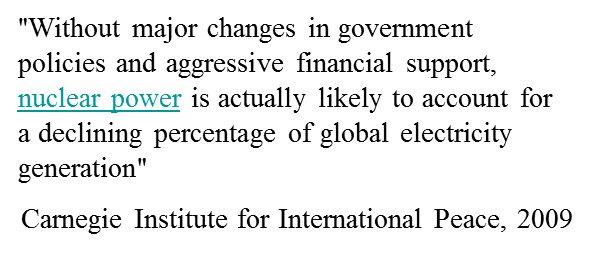Assessing Alternatives to Fossil Fuels
Nuclear Power
- Nuclear power currently supplies approximately 8% of total US energy supply
- Nuclear power generating capacity grew dramatically until 1984 when it stagnated due to rising concerns about its risks after accident at Three Mile Island in 1979 and Chernobyl in the Ukraine in 1986
- Since Three Mile Island, there was not a new reactor order in the US until September 2007
- Improvements in safety and efficiency at nuclear power plants have increased significantly since the 1980s
There remain a number of concerns about nuclear power’s risks including:
- Persistent operating risks often tied to human error
- Risks of radioactive release stemming natural hazards (earthquakes, hurricanes, tsunamis, tornados)
- Risks of radioactive release from nuclear facilities due to terrorism
- Unresolved technical and political issues related to long-term fuel disposal and storage
The lack of new capacity and the decommissioning of old plants, will lead to a reduction in nuclear power production, not only in the US but the world.

Still, since 2000 there has been expanding support for nuclear power. The specter of climate change has led some environmentalists to shift their long-held positions against nuclear power — an energy source that can produce large amounts of electricity without the release of GHG gases.

